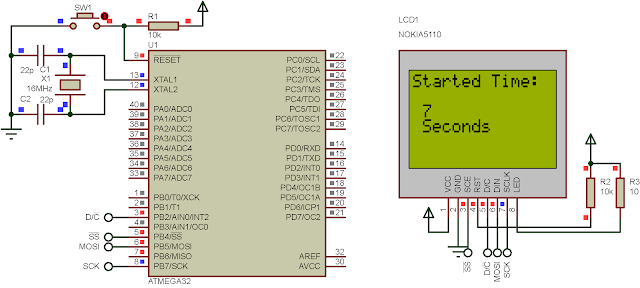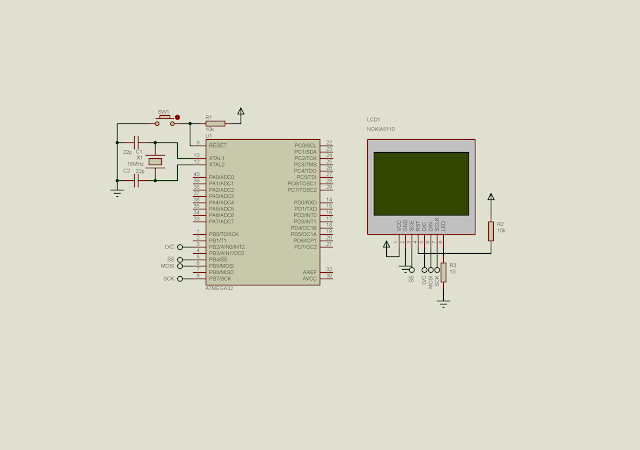Overview
The Nokia 5510 mobile phone came with a 84x48 graphical LCD display. This display is a monochrome dot matrix with controller PCD8544 from NXP semiconductor. The PCD8544 interfaces to the MCU using the high speed SPI communication interface.
 |
| A Nokia 5510 LCD module from an Ali Express Store. |
This eight-pins module has its pin function as descripted below:
- VCC - Positive supply voltage (from 2.7 V to 3.3 V)
- GND - Ground connection
- SCE - Chip Select (active low)
- RST - Reset (active low)
- D/C - Data/Command mode ( low for command and high for data)
- DIN - SPI MOSI
- SCLK - SPI serial clock
- LED - LED backlight supplies at 3.3V maximum voltage
LCD Command
 |
| Commands for the PCD8544 matrix LCD controller |
Within those byte of instruction there are some bits to explain that list below.
 |
| Explanations of each bit |
There are many details due to the device's specification. Here I descript only some basic and most used commands.
- displays blank
- operates in normal mode
- displays all segments
- display an inverse video
ATMega32 AVR Interfacing and Programming With The Nokia 5510 LCD Module
For an introductory example using this device, I follow the recommended instruction created by the LCD controller's vendor to make a proper operation for this device.
The LCD module is a Spark Fun Nokia 5510 module I bought from E Bay. With this simple example the display show only text and displaying the time since it's powered up.
The displaying text is a set of font I get from the Arduino play ground website.
Schematic
C Source Code In Atmel Studio 7
 |
| Simulation Result |
